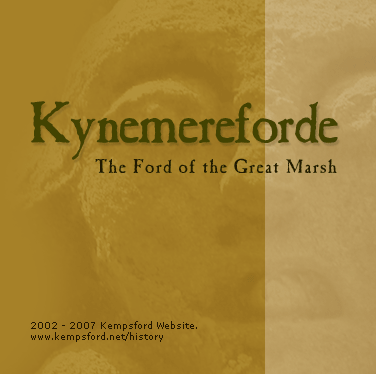| Welcome to the history of Kempsford
Kempsford, anciently known as Kynemereforde, “The Ford of the Great Marsh,” is rich in historical and legendary lore, with Father Thames as the boundary between Gloucestershire and Wiltshire.
 A Village History Rev A.B. Mynors (PDF 107k) A Village History Rev A.B. Mynors (PDF 107k)
 Parish Plan Summary 2012 (PDF 45k) Parish Plan Summary 2012 (PDF 45k)
 1991 Village Appraisal (PDF 480k) 1991 Village Appraisal (PDF 480k)
 Historical Photograph Archive Historical Photograph Archive
The village's main claim to historical fame began in 1297 when Henry Plantaganet, Earl of Lancaster married Maud de Chaworth, who had inherited the Manor from her father. Thus began a series of royal links, the end of which was the marriage of Blanche de Chaworth to John of Gaunt and the birth of their son Henry, who, in 1399, became Henry IV. This powerful connection resulted in the continuing embellishment of the parish church.
The royal link is long gone, but the church still stands, symbol of the importance of Kempsford's past. Its architectural style is unique in Gloucestershire, but its outstanding feature is the carved and painted ceiling of the mediaeval tower. Recently restored as a result of a grant from the Heritage Lottery Fund, it now glows and gleams in glory.
Kempsford also enjoyed a period of high prosperity in the Victorian era, when 142 families were supported by agriculture. From 1789 - 1927 it was also a major stop on the Thames/Severn canal. During this period additional paintings were done in the arch above the altar and these too have been restored with HLF grant monies. The most famous depiction of the village is the Kips engraving of 1712 for Atkyns' History of Gloucestershire. The great house is no more, but thechurch and row of neighbouring barns remain. |
